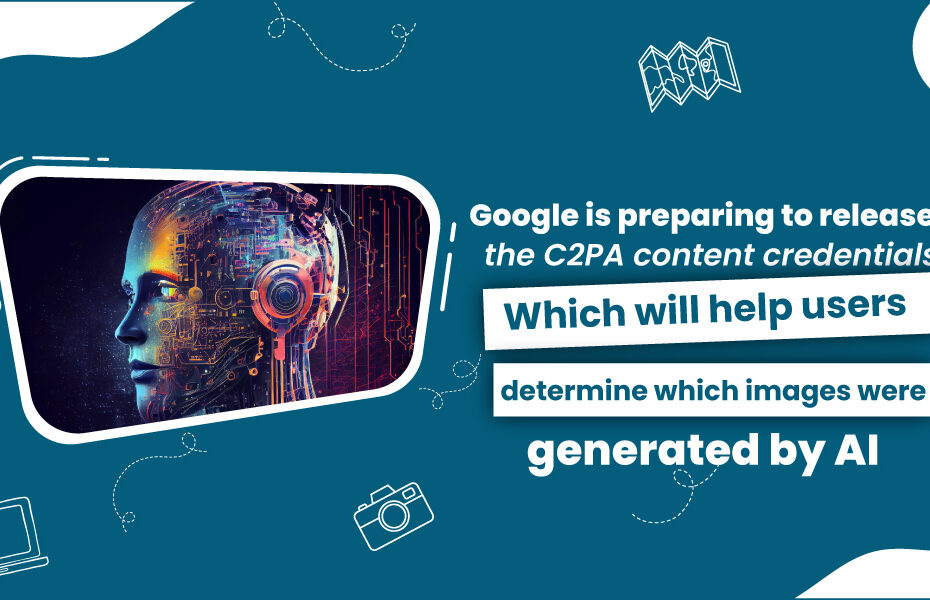More dramatically, Google has said that it will incorporate measures that the Coalition for Content Provenance and Authenticity has developed into Android 13 to help users better understand when images and videos have been made by AI. This initiative was unleashed at a recent tech event as a response to the increased malpractice in spreading fake news and manipulating content through enhanced artificial intelligence technologies.
Due to the progress in AI in content generation, it has become almost impossible to differentiate between real and AI-generated visuals. Google’s new system will enable users to get a clear view of where the content like images and videos they find online originated from and thus they will be in a better position to make the right decisions depending on the origin of the content they find.
What is C2PA?
C2PA is an association of various actors of the industry, Adobe and Microsoft Party aimed at developing common standards regarding the content origin. According to the idea, there are plans to establish a stable ecosystem that will enable users to check the origin and history of media content. When incorporated into Google platforms, these credentials are expected to improve the credibility of the content since the number of fake news and other misinformation campaigns remains a growing global phenomenon.
How It Works
The how of the C2PA content credentials is that they will operate by placing metadata right in the picture and in the videos. Some of the data included in this metadata will be the creator’s details, the history of editing that the content has undergone, and it’s important whether the content has been generated through an AI. This information refers to data such as email addresses, usernames, number of posts, date and time of posts, and IP addresses when users upload or share content, which will be saved and easily referenced at any time in the content’s life cycle.
Google wants to extend these features to its services such as Google Search and Google Lens in the future. People will be allowed to use these tools to ‘toss’ images within their search results to determine the actuality of the content in question.
Addressing Misinformation
Government officials and technologists are concerned due to an increase in the degree of ‘artificial intelligence’ in the creation of content to be disseminated publicly. Google’s move can be seen at an appropriate time since media literacy is becoming a crucial aspect nowadays. Thus, increasing the chance of users understanding what they are dealing with, Google tries to help the population distinguish between what is real and what is fake and at the same time averts manipulations.
Besides, in its effort regarding disinformation, it declared that Google also plans to work with fact-checking companies to increase the reliability of the information disseminated through its services. Part of this strategy is giving users the background on certain images or videos that may be fallacious to help the user identify the truth.
User Empowerment
The implementation of C2PA content credentials into the service offering is an example of Google’s long-term plan for user-enablement. The issue is that the tech giant thinks it is capable of offering transparent tools for content check, thus, ensuring the users are provided with all the information they need to act in a rather sophisticated world wide web. This initiative is not only for safeguarding the users from fake news but for creating a culture of providing the right information in the virtual world.
Looking Ahead
Google’s decision to use the C2PA content credentials for implementing content legitimacy shows a paradigm shift to lessen the problem of forging content in the AI era. In particular, one will have to think of existing and continuously emerging possibilities to identify the source and decency of content in the context of digital media. This move is expected to be followed by other tech giant companies emulating the steps by Google to create what will be an acceptable benchmark in the industry.
To sum up, we can state that the decision of Google to proceed with the launch of the C2PA content credentials is an example of a very stringent preventive strategy against misinformation and boosting the users’ level of awareness. Considering that AI is making headlines for its impact on content creation, tools such as these will be crucial to assist users in differentiating between what is real and artificial in the virtual environment. With this initiative, Google not only responded to the existing problems but also paved the way for future innovations for content credibility.
In publishing and graphic design, Lorem ipsum is a placeholder text commonly used to demonstrate the visual form of a document or a typeface without relying on meaningful content.
